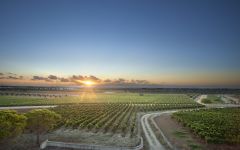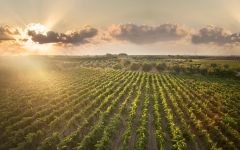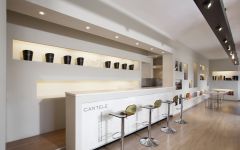Cantele Amativo 2015
-
Wine
Enthusiast -
Robert
Parker



Product Details
Your Rating
Somm Note
Winemaker Notes
Ruby red in color, this wine offers aromas of rose and violet, giving way to wild fruit, dried fig, preserves, and vanilla. The same aromatic equilibrium reappears in the mouth, releasing delicate progressions of fruit and spice. The rich, balanced flavor of this wine's components give it its distinctive imprint. And its extreme delicacy closes with ample, persistent flavors in the finish.
Pair with well-aged ripe cheeses and smoked and spicy cured meats.
Professional Ratings
-
Wine Enthusiast
A blend of 60% Primitivo and 40% Negroamaro, this wine offers an intensity of tobacco, leather and dried herbs on the nose, with blackberry coulis filling out the dense core. It is rich in dark-berry flavors on the palate, yet bright acidity and firm tannins provide a solid frame alongside a wealth of lingering spice tones.
-
Robert Parker's Wine Advocate
The Cantele 2015 Amativo is a hearty blend of 60% Primitivo and 40% Negroamaro, showcasing a geographically widespread selection of grapes from the slightly northern Puglia province of Brindisi to the southern reaches of Lecce. The wine struts its stuff in this hot vintage with ripe tones of blackberry preserves, figs and dark prunes. The mouthfeel is rich in extract and concentration, but the structure is soft and without much tannic bite. This is a good choice for a hearty meat dinner with barbecue spice and mesquite. The wine ages in mostly French oak with a small 15% of American oak. Some 34,000 bottles were made. Rating:90+
Other Vintages
2012-
Wine
Spectator -
Robert
Parker





At the end of World War II, when most of the population of Puglia was moving North to work in the big factories near Torino and Milano, Giovanni Battista Cantele, a wine merchant living in the nothern city of Imola, moved his family to Salento. The final decision was made by his wife Teresa Manara, who, at the time, barely knew anything about the area but fell in love with Puglia at first sight. She would later become the inspiration for a wine that now bears her name. After studying winemaking in Conegliano, Giovanni's son, Augusto Cantele, started the family winery, Cantine Cantele, with his father and his brother Domenico in 1979. Today, Teresa Manara and Giovanni Battista Cantele’s grandchildren run the winery together: Augusto’s children, Gianni and Paolo; and Domenico’s children, Umberto and Luisa. The Cantele winery is located in Guagnano, in the heart of the DOC where Negro Amaro dominates the landscape. Situated in the heart of the Mediterranean, Puglia is a land of rare beauty, where vast plains alternate with gentle hills. Salento, the long narrow strip that forms Puglia’s southern peninsula, extends between the Ionian and Adriatic seas. It’s an area rich with ancient olive groves and vines, enchanting beaches and jagged rocky shoreline.

With hundreds of red grape varieties to choose from, winemakers have the freedom to create a virtually endless assortment of blended red wines. In many European regions, strict laws are in place determining the set of varieties that may be used, but in the New World, experimentation is permitted and encouraged resulting in a wide variety of red wine styles. Blending can be utilized to enhance balance or create complexity, lending different layers of flavors and aromas. For example, a red wine blend variety that creates a fruity and full-bodied wine would do well combined with one that is naturally high in acidity and tannins. Sometimes small amounts of a particular variety are added to boost color or aromatics. Blending can take place before or after fermentation, with the latter, more popular option giving more control to the winemaker over the final qualities of the wine.
How to Serve Red Wine
A common piece of advice is to serve red wine at “room temperature,” but this suggestion is imprecise. After all, room temperature in January is likely to be quite different than in August, even considering the possible effect of central heating and air conditioning systems. The proper temperature to aim for is 55° F to 60° F for lighter-bodied reds and 60° F to 65° F for fuller-bodied wines.
How Long Does Red Wine Last?
Once opened and re-corked, a bottle stored in a cool, dark environment (like your fridge) will stay fresh and nicely drinkable for a day or two. There are products available that can extend that period by a couple of days. As for unopened bottles, optimal storage means keeping them on their sides in a moderately humid environment at about 57° F. Red wines stored in this manner will stay good – and possibly improve – for anywhere from one year to multiple decades. Assessing how long to hold on to a bottle is a complicated science. If you are planning long-term storage of your reds, seek the advice of a wine professional.

Well-suited to the production of concentrated, fruity and spicy red varieties, Puglia is one of Italy’s warmest, most southerly regions. Its entire eastern side is one long coastline bordering the Adriatic Sea. About half way down, the region becomes the Salento Peninsula. This peninsula, bordered by water on three sides, receives moist, nighttime, sea breezes that bring a welcome cooling effect to the region, where little rain creates a challenging environment for its vines. In fact, the region is named for the Italian expression, “a pluvia,” meaning “lack of rain.”
Puglia’s Mediterranean climate and iron-rich, calcareous soils support the indigenous Primitivo, Negroamaro and Nero di Troia. Primitivo produces an inky, spicy, brambly and ripe red wine whose best expression comes from Manduria. Nero di Troia produces tannic, rustic reds from Castel del Monte DOC while Negroamaro, typically blended with Malvasia nera, plays a large part in may blends made throughout the peninsula.
Puglia produces a small amount of white wines as well, predominantly made of the fruity, Trebbiano Toscano, or light, Bombino bianco grapes.
